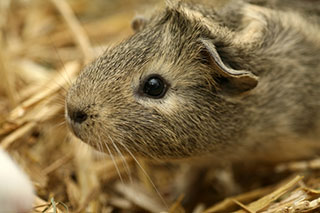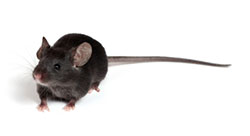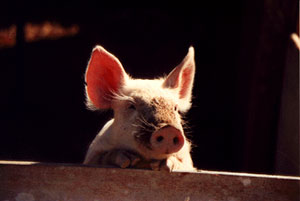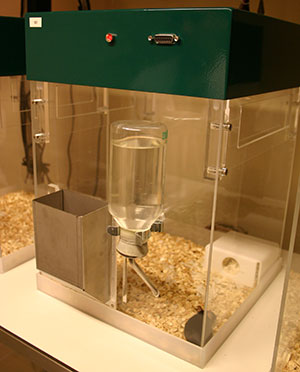We like zebrafish and the promise they hold for neuroscience research. That’s one of the reasons why Noldus is a sponsor of the 16th Australia and New Zealand Zebrafish meeting that will take place next week at Queensland’s Gold Coast. It’s also a good reason to mention some of the most interesting zebrafish studies we have been highlighting on our blog lately.
G. Smit
Recent Posts
3 interesting studies to get you in the mood for the Australia and New Zealand Zebrafish Meeting
Posted by G. Smit on Jan 26, 2015
Topics: zebrafish
Women and Venus, men and Mars, right? Men and women are fundamentally, biologically, and emotionally different. We also act differently in social situations. Wouter van den Berg and his colleagues at the Erasmus University Medical Center (Rotterdam, The Netherlands) recently published an interesting study that, using mice, shows the establishment of social hierarchies as being sex-dependent.
Topics: mice, social hierarchy, testosterone, gender differences, sex-specific behavior, automated tube test
We are all a bit stressed from time to time. Maybe some of you a bit more than usual right now, it being the post-holiday, catch-up-with-everything season and all… But stress is a natural thing, and how we cope with it differs from person to person. In research, we use the term coping style. And now Christian Tudorache and his colleagues from Leiden University (The Netherlands) have found that these coping styles emerge early on in life, or at least they do in zebrafish. They recently published a paper in Stress.
Topics: EthoVision XT, Video tracking, zebrafish, activity monitoring, stress research, coping styles
We cannot stay behind when it comes to the end-of-year lists, so here is a top 14 of 2014’s most popular animal behavior posts on our Noldus behavioral research blog. (For a top 3 on human behavior research, see this post) As expected, the list is dominated by zebrafish research, but it’s not the topic of our most read post!
Topics: mice, social behavior research, dogs, horses, zebrafish, learning and memory, open field test, anxiety research, rats, wolves, caterpillars, 2014, crayfish
Walking the ladder: testing the cellular source of motor functioning in mice
Posted by G. Smit on Sep 11, 2014
The cerebellum, our “little brain”, is all about motor control; more specifically, it’s about coordination, precision, and timing. So when the functioning of the cerebellum is compromised, incoordination of movement (ataxia) occurs. Ataxia is found in many neurological diseases such as Parkinson’s and early onset Alzheimer’s.
Cerebellar cell types functioning
Purkinje cells, interneurons, and granule cells of the cerebellar cortex play an important role in reflexive types of motor learning, as we can tell from studies using the eye blink test and vestibulo-ocular testing. But since their role in more complex behaviors is not well understood, Maria Fernanda Vinueza Veloz and her colleagues decided to study the role of each one of these cell types in motor learning, locomotor adaptation, motivation and avoidance behavior using several knock-out mouse strains and testing them on the ErasmusLadder.
Topics: mice, ataxia, locomotion, ErasmusLadder, reflexive motor learning, motor performance, cerebellum
Domestication has a considerable effect on the behavior of animals, which is not very surprising. The dramatic change in their environment and provision of food and shelter alter the need for behaviors such as exploration and social behaviors. But what exactly is the difference?
Topics: The Observer XT, social behavior research, guinea pigs, stress research
Some might argue that laboratory mice are not the same as wild mice, yet they remain capable of performing the innate, routine behaviors necessary to survive in natural environments, such as courtship, nest-building, and exploratory activities. Still, their ‘non-natural’ (read: laboratory) environment may limit them in the expression of these behaviors, something we recently addressed in these blog posts.
Circadian rhythmicity
The internal circadian clock is of fundamental importance for animals to anticipate recurring events and ensuring basic behaviors, such as gathering food and building a nest, occur in time. One of the ways we influence the animal’s natural capacity to perform these and other innate behaviors is by altering the light/dark cycle in a laboratory setting.
Topics: EthoVision XT, mice, Video tracking, circadian rhytmicity, sociability test, marble burying
A couple of weeks ago, I wrote about why social pigs do better. This week, one of the researchers in this project, Inonge Reimert explains about the novel object/novel environment test they performed.
Topics: EthoVision XT, Video tracking, The Observer XT, animal welfare, pigs, emotions
Last week we talked about the new publication by Berry Spruijt and his colleagues in Journal of Neuroscience Methods, in which they tell us about the limitations of classical behavioral tests such as the open field. The article focused particularly on the great lack of reliability and validity in the use of these tests within and across laboratories. So what can we do to fix this problem? Here are six recommendations the authors list to improve the translational and predictive value of behavioral readouts:
Topics: EthoVision XT, mice, Video tracking, open field test, rats, PhenoTyper
The do’s and don’ts in behavioral testing: improve your open field test
Posted by G. Smit on Jun 5, 2014
Scientists have been performing open field tests for quite some time now. For eighty years, to be exact. And over the years it has become one of the most popular tests in rodent behavioral research, as it allows the researcher to study (locomotor) activity, exploration, and anxiety all in one test environment. So what’s not to love? It’s easy, short, and straight-forward. Plus, it is a highly validated test…or is it?
In their recent review in Journal of Neuroscience Methods, Berry Spruijt (Professor of Ethology and Animal Welfare, Utrecht University, the Netherlands) and his colleagues tell us that, like most of the popular classical tests, it is actually not well validated. This is a well-known problem in behavioral research. In fact, specific for the open field test, there seems to be a lack of reliability and validity. Despite all the efforts labs put into standardizing their methods and procedures, there is still a great amount of variability in behavioral results within and across laboratories.
Topics: EthoVision XT, mice, Video tracking, open field test, rats, PhenoTyper
















